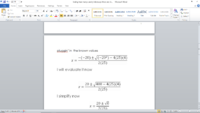i understand it better after your explanation
The intercepts of a graph are points at which the graph crosses the axes. the x-intercept is the point at which the graph crosses the x-axis. here the y-coordinate is zero, and the y-intercept is the point at which the graph crosses the y-axis, here the x-coordinate is zero. i understand now why hallsoflvy equaled them to 0 at the beginning of the post.
To determine the x-intercept, we set y equal to zero and solve for x. Similarly, to determine the y-intercept, we set x equal to zero and solve for y.
do you mind if i give it a shot, i mean, at solving the two equations separately. i wanna know where you're going with this, like, when they're solved, what will the solutions indicate?. that would be interesting. if you allow me i will pursue this till the end.







